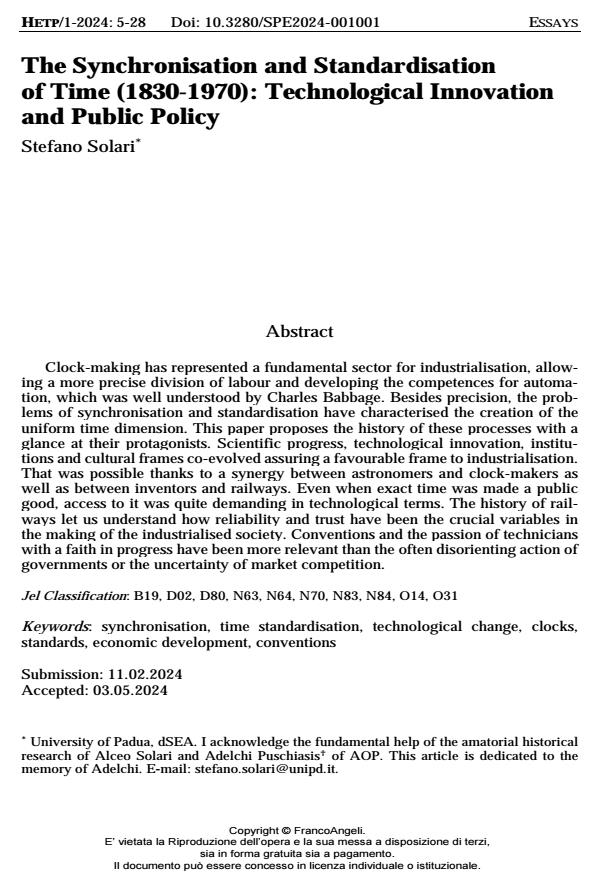The Synchronisation and Standardisation of Time (1830-1970): Technological Innovation and Public Policy
Journal title HISTORY OF ECONOMIC THOUGHT AND POLICY
Author/s Stefano Solari
Publishing Year 2024 Issue 2024/1
Language English Pages 24 P. 5-28 File size 157 KB
DOI 10.3280/SPE2024-001001
DOI is like a bar code for intellectual property: to have more infomation
click here
Below, you can see the article first page
If you want to buy this article in PDF format, you can do it, following the instructions to buy download credits

FrancoAngeli is member of Publishers International Linking Association, Inc (PILA), a not-for-profit association which run the CrossRef service enabling links to and from online scholarly content.
Clock-making has represented a fundamental sector for industrialisation, al-lowing a more precise division of labour and developing the competences for au-tomation, which was well understood by Charles Babbage. Besides precision, the problems of synchronisation and standardisation have characterised the creation of the uniform time dimension. This paper proposes the history of these processes with a glance at their protagonists. Scientific progress, technological innovation, institutions and cultural frames co-evolved assuring a favourable frame to indus-trialisation. That was possible thanks to a synergy between astronomers and clock-makers as well as between inventors and railways. Even when exact time was made a public good, access to it was quite demanding in technological terms. The history of railways let us understand how reliability and trust have been the crucial variables in the making of the industrialised society. Conventions and the passion of technicians with a faith in progress have been more relevant than the often disorienting action of governments or the uncertainty of market competition.
Keywords: synchronisation, time standardisation, technological change, clocks, standards, economic development, conventions
Jel codes: B19, D02, D80, N63, N64, N70, N83, N84, O14, O31
Stefano Solari, The Synchronisation and Standardisation of Time (1830-1970): Technological Innovation and Public Policy in "HISTORY OF ECONOMIC THOUGHT AND POLICY" 1/2024, pp 5-28, DOI: 10.3280/SPE2024-001001